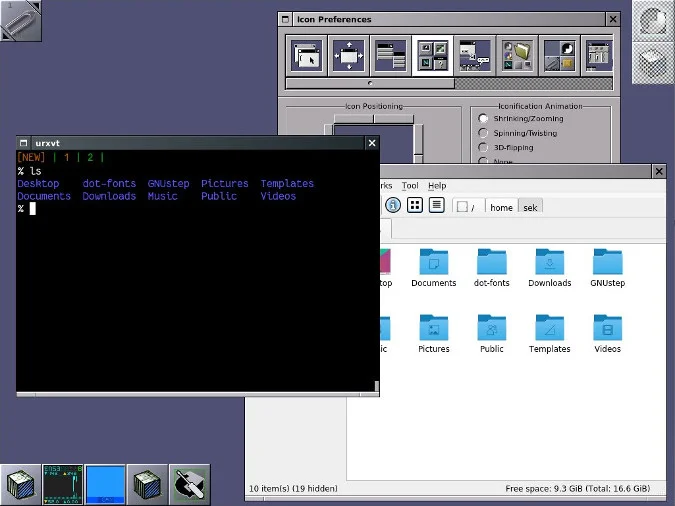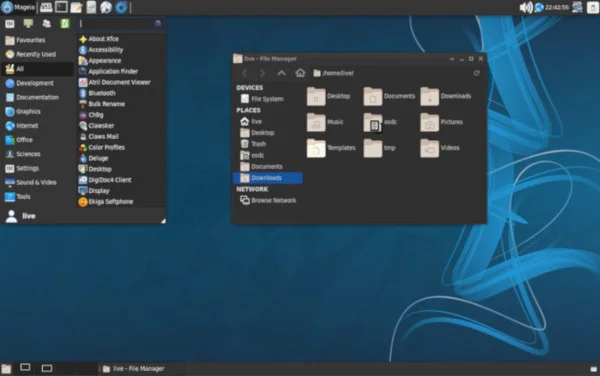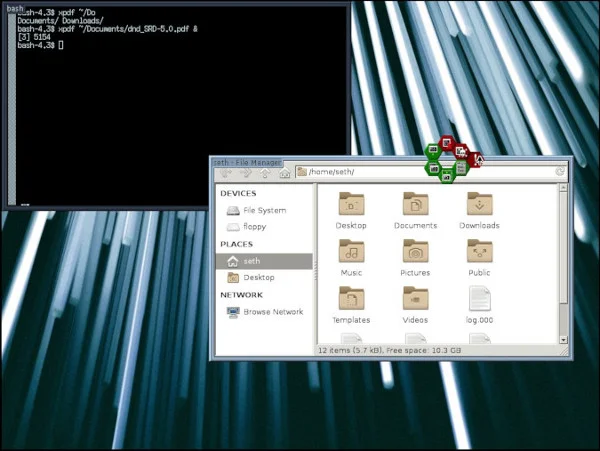One of the great strengths of the Linux desktop is the choice it affords its users. If you don't like your application menu in the lower left of your screen, you can move it. If you don't like the way your file manager organizes your documents, you can use a different one. Admittedly, however, that can be confusing for new users who aren't used to having a say in how they use their computers. If you're looking at installing Linux, one of the choices you're going to have to make is which desktop you want to use, and the best way to do that is to try a few different ones until you find the one that feels right for you.
The defaults

opensource.com
As the default on Fedora, Ubuntu, Debian, and several others, the GNOME desktop is probably the most popular desktop for Linux. It's an intuitive and modern interface, with little nods to mobile design so it feels natural even on a touch screen.
Some distributions of Linux opt for something different, though, including KDE Plasma, Pantheon, Cinnamon, and Mate.
- GNOME: the modern and intuitive default
- Mate: legacy GNOME
- KDE: the powerful and configurable Plasma desktop
- Cinnamon: classic GNOME
- Pantheon: the divine default of ElementaryOS
- Budgie: a subdued desktop
- Trinity: legacy KDE
Traditional Unix

Unix, the progenitor of modern operating systems and the direct inspiration for Linux, has a surprisingly rich history of desktops. Most people aren't familiar with Unix desktop design because Unix computers were considered specialist machines common to academic, scientific, and film settings rather than the household. If you were a Unix, IRIX, or NeXT user, then you might have fond memories of desktops like CDE or NeXTStep. You're in luck because the tradition lives on:
- Windowmaker: the NeXT interface reborn
- Enlightenment: a modernized and improved Windowmaker-style desktop
- Fluxbox: thinking outside the box
- Openbox: improving the usability of the box
- TWM: the timeless sample desktop bundled with X11
- Fvwm: TWM improved
Lightweight desktops

You might wonder why Linux has so many desktops to choose from. While you can chalk a lot of it up to personal preference and a low tolerance for inefficiency, there are technical benefits to optimizing an interface. For instance, old computers struggling to keep up with an update to its UI can be given new life with a lightweight desktop. Alternately, you may simply want to allocate CPU cycles to everything *but* your desktop, so keeping your primary UI minimal just makes sense. Whatever your reason, there are several you can try:
- XFCE: delivers a familiar desktop for a fraction of the cost
- LXQT and LXDE: familiar desktops for a smaller fraction of the cost
- PekWM: a box-style window manager
- Joe's Window Manager: another box-style window manager
- Ratpoison: don't touch that mouse
- Herbstluftwm: Ratpoison for Vim users
- Lumina: a desktop developed for PC-BSD
Experimental desktops

One of the things that happens when it's relatively easy to create and integrate a desktop into a system is that you get interesting proof-of-concepts and experimental projects. Some are more polished than others, and some aren't terribly easy to install. These probably aren't destined to be your permanent desktop, but they can be fun to experience:
- Unix Desktop Environment: a reinvention of the desktop
- Rox: a progressive and modern desktop in its day
- MLVWM: what if the Apple IIe had run Unix?
- Equinox: just the basics
Choose your desktop
If you're overwhelmed by choice, then keep in mind that desktops are meant to be optional. There's no obligation to try more than the one that ships with your distribution.
Many a power user of Linux settles for whatever desktop their distribution puts in front of them. The important thing is to get a Linux install that works with your computer, and spend time with it to learn how it works. Ultimately, all desktops are only meant to do the same thing: help you organize and manage your important data. As long as you know how your desktop works, that's all that matters. But if you've learned everything you need to know about your default desktop, you now have plenty of options to try out on the weekend. Have fun!







51 Comments